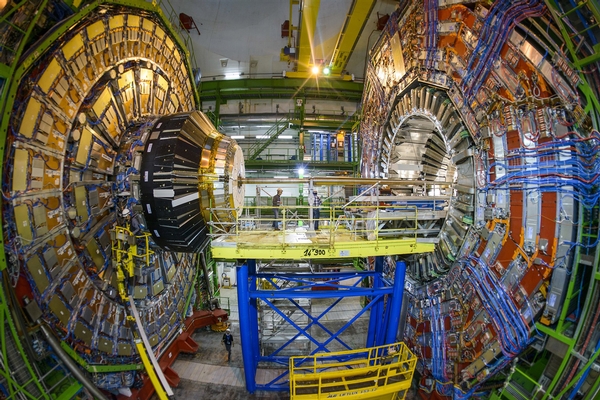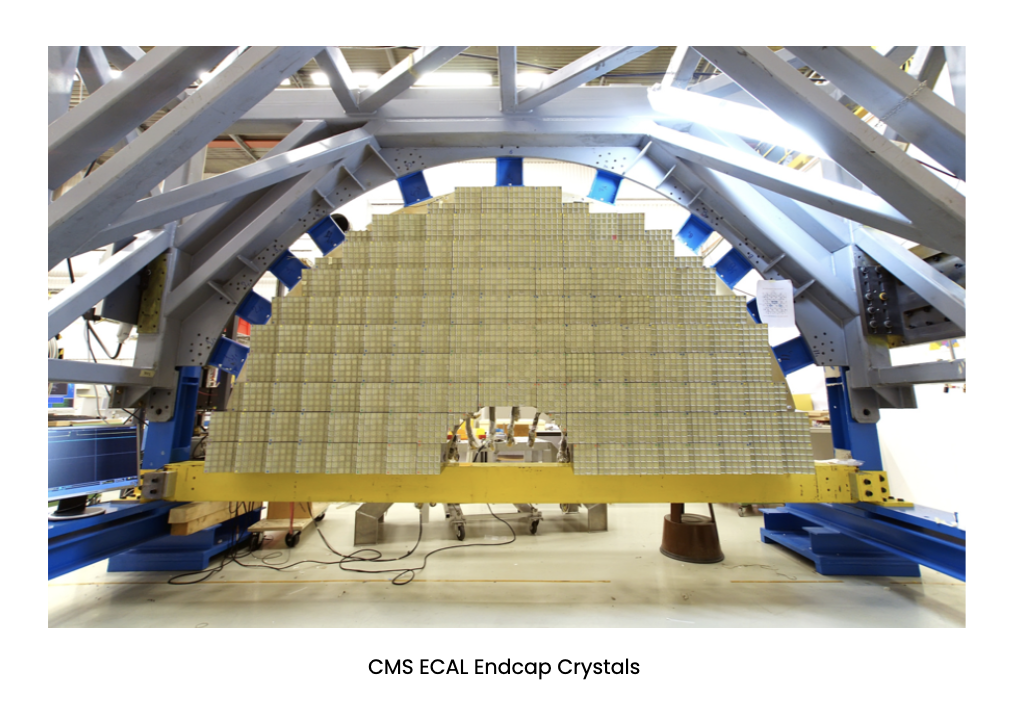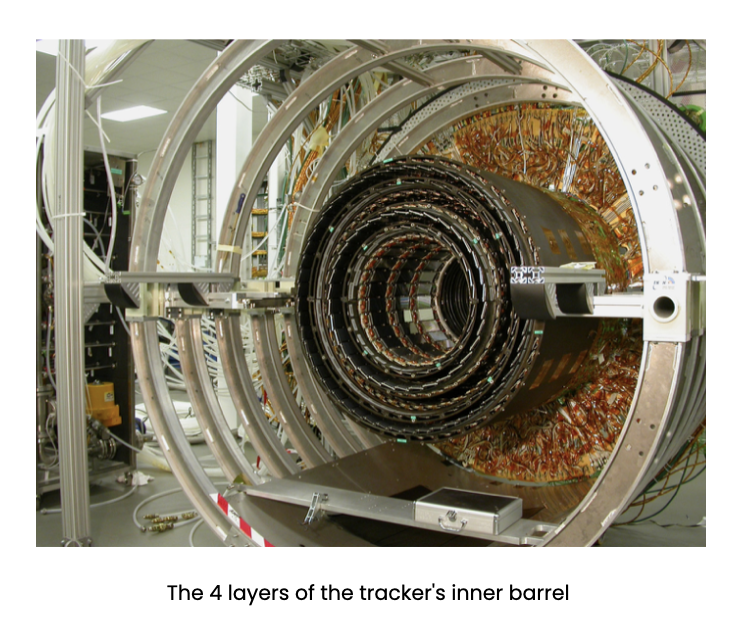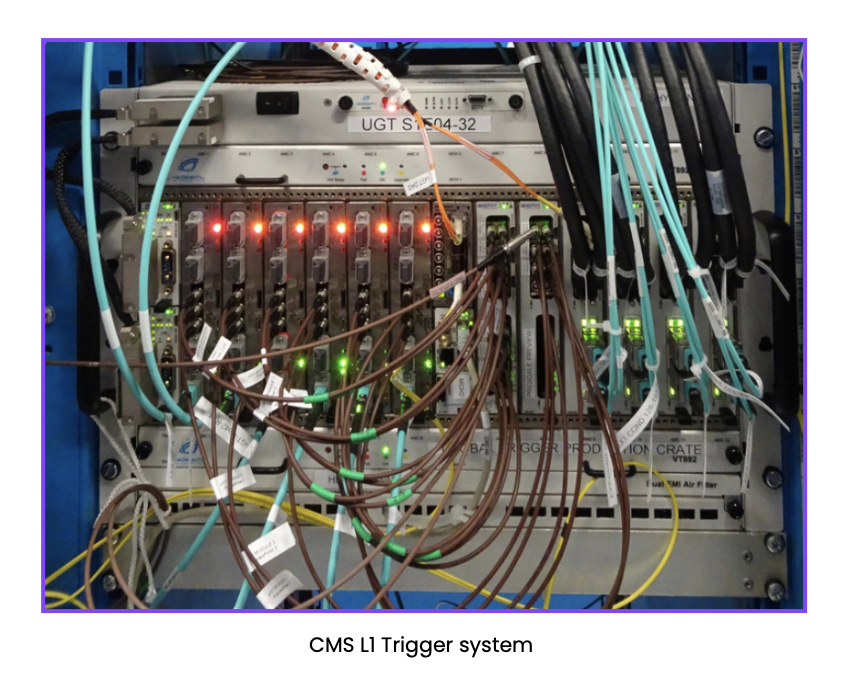
CMS is a particle detector designed to identify a wide range of particles and phenomena produced from high-energy proton collisions at the LHC. The CMS experiment studies these collisions with the aim of better understanding particle interactions with respect to subjects such as the Higgs Boson and the origin of mass, dark matter and gravity. The CMS experiment has been publishing physics results since the LHC began data-taking in the summer of 2008. The highlight was the discovery of the Higgs boson at the same time as the ATLAS experiment in 2012. Now with significant Higgs boson candidates, the CMS experiment is exploring the physics properties of the Higgs boson.
The RAL CMS PPD group comprises experimentalists, theorists and PhD students, and contains approximately 20 people. The physics interests of the group include top physics, exotic bosons (including the Higgs), long-lived particles and quantum black holes.
To know more about the projects and studentships in which past postgraduate students took part, check the CMS PhD opportunities page
DETECTOR UPDATE INVOLVEMENTS:
ELECTROMAGNETIC ENDCAP CALORIMETER (ECAL)
The electromagnetic calorimeter (ECAL) is one of the most important components of the CMS detector and has been optimised to detect the decay of the Higgs boson into a pair of photons.
The PPD group is a prominent and active member of the CMS ECAL project, with a long history of key contributions and a

PPD physicist, David Petyt, is the ECAL endcap project leader. Indeed, RAL designed and delivered the ECAL endcaps (EE), designed the Vacuum Phototriode (VPT) for light detection and produced the mechanical design for the entire ECAL.
PPD maintains a strong presence at CERN to support ECAL operations, being responsible for the operation and maintenance of the high voltage system for the endcaps, which was designed and delivered by PPD in collaboration with TD. The group is regularly called upon to provide detailed interpretation of ECAL data for interesting events, undertaken at the request of detector performance and physics analysis teams, and this continues to be the case in Run 3.
PPD has also played a central role in optimising the performance of ECAL for physics analyses. In particular, the group provided three detector performance convenors, responsible for organising the data analysis to monitor and understand the detector behaviour and precisely calibrating the data. This was a crucial contribution to the discovery of the Higgs boson in 2012, and PPD is now leading the efforts to provide the optimum detector performance for LHC Run 3.
SILICON TRACKER

The silicon tracker is at the heart of the CMS detector. It makes precise measurements of the paths of charged particles as
they pass through the magnetic field, allowing the main event vertex to be reconstructed very precisely. The PPD group
worked closely with RAL electronics engineers to design readout electronics for the tracker detector, has been closely involved in beam tests of the detector, and continues to make a substantial contribution to the development of reconstruction and simulation software.
After Run 3 and during Long Shutdown 3 (LS3), the entire silicon tracking system will be replaced. The new tracker will feature increased forward acceptance and compatibility with higher data rates, and the backend electronics will use the Serenity ATCA card, which can provide the required cooling and power capacity. The group is working on tracking events collected during HL-LHC collisions, which will be used to better identify events of interest.
LEVEL-1 TRIGGER (Phase-1 Upgrade and HL-LHC)
The RAL CMS group made major contributions to the upgrade of the CMS Level-1 trigger system during 2015 and early 2016 (Phase-1 update), in order to improve its efficiency for searches and precision measurements, compared with the previous run. In particular, the calorimeter data was processed to reconstruct electrons, tau leptons and jets in a separate data path,

which are then combined in the micro-Global Trigger (μGT), which takes the decision of whether or not a proton–proton collision is a sufficiently interesting event. The completed system was successfully deployed in 2016 and allowed CMS to trigger efficiently in the difficult pile-up conditions that were experienced in Run 2. The trigger is now operational in Run 3.
PPD took also charge of the final assembly and acceptance testing of the common MP7 FPGA platform used in the Phase-1 upgrade, with a test centre constructed at RAL for this purpose.
The HL-LHC Level-1 trigger will make use of the information provided by the tracker, calorimeter and muon subdetectors. A major milestone achieved in 2021 was the delivery of the Level-1 trigger TDR which defined the overall architecture and PPD had significant input to this, particularly in the online software and firmware frameworks elements. In collaboration with other UK institutes, over the last year, PPD staff have defined the high-level strategy for hardware tests after TDR submission and established a central Level-1 trigger test stand at CERN, which is the main facility for performing system integration tests.
HIGH-LEVEL TRIGGER (HLT)
The CMS High-Level Trigger (HLT) runs on the output of the CMS Level-1 trigger to further reduce the event rate to a manageable level. Like the Level-1 trigger, the performance and robustness of the HLT are vital for all aspects of the CMS programme. PPD recently supplied the coordinator of this area, with their two-year term ending Sept 2021. During this term, the work encompassed both major milestones for the HL-LHC upgrade and preparations for Run 3.
A key achievement of the CMS trigger group under PPD’s leadership of the project was the successful submission and approval of the DAQ-HLT HLLHC TDR. The realistic reconstruction algorithms developed for the TDR vastly exceeded expectations showing that the current selection thresholds could be maintained or even improved. Another major development has been the successful deployment of a heterogeneous HLT farm with CMS now routinely running HLT algorithms on GPUs. This was a significant change in how the CMS trigger operates and required significant coordination of the effort encompassing everything from ensuring the code itself was functional to improving the infrastructure to make this deployment possible.
